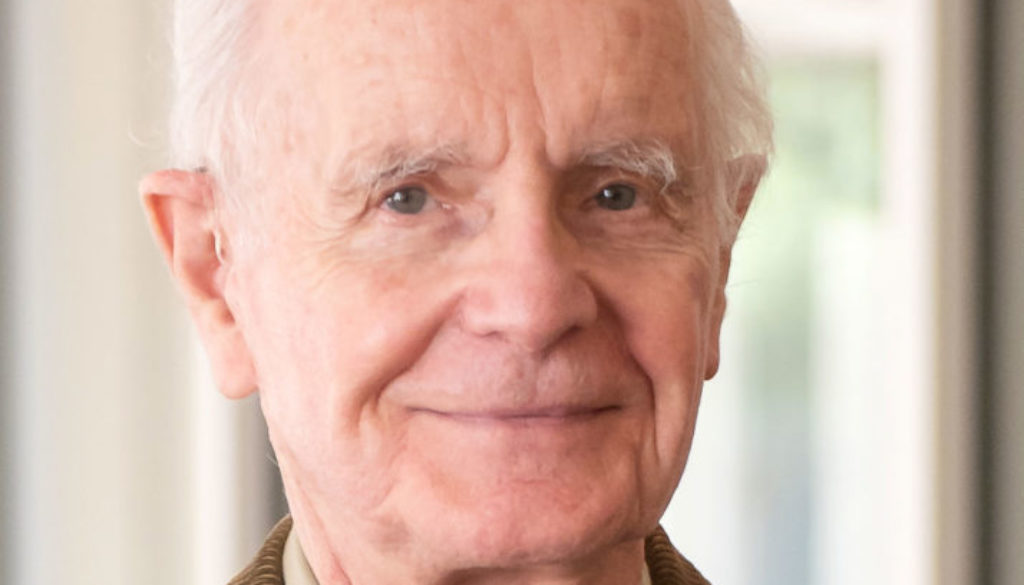Scully Honored with Optical Society’s Herbert Walther Award
Dr. Marlan O. Scully, distinguished professor of physics and astronomy at Texas A&M University and professor of mechanical and aerospace engineering at Princeton University, has been selected to receive the 2011 Herbert Walther Award honoring his pioneering research and leadership.
The award, jointly bestowed by the Optical Society (OSA) and the Deutsche Physikalische Gesellschaft (DPG) and presented by each society in alternate years, recognizes distinguished contributions in quantum optics and atomic physics as well as leadership in the international scientific community. Scully is cited for his “fundamental and applied contributions: from the quantum theory of optical and micro-masers to the quantum eraser, and from inversionless and correlated emission lasers to anthrax detection.”
Scully will be presented Tuesday (May 24) with the award, which is named for Professor Herbert Walther, founding member and longtime director of the Max Planck Institute of Quantum Optics, in acknowledgement of the seminal influence of Walther’s path-breaking innovations in quantum optics and atomic physics and for his wide-ranging contributions to the international scientific community.
“Marlan Scully is one of the world’s most distinguished scientists in the field of quantum optics,” said Luiz Davidovich, selection committee chair. “We are delighted to present the 2011 Walther Award to a true pioneer of this field whose work has constantly stimulated new research directions while also inspiring young scientists to follow in his footsteps.”
Scully is a member of the National Academy of Sciences, Academia Europaea and the Max Planck Society as well as a fellow of the American Academy of Arts and Sciences, OSA and the American Physical Society (APS). His career features a vast set of contributions to the field of quantum optics and physics, from developing the quantum theory of the laser and micro-maser theory to discovering the concept of the quantum eraser and inventing the concepts of correlated emission. In addition to contributing to the formulation of the theory of laser gyroscopes and free-electron lasers, Scully co-led the first experiment demonstrating lasing without inversion and carried out the first demonstration of room-temperature slow light. He also is responsible for the development of a comprehensive theory of the dynamics of Bose-condensation, among many other career accomplishments. He has published more than 500 papers that have been cited more than 20,000 times and written two textbooks in laser physics and quantum electronics.
In addition to joint professorial appointments at both Texas A&M and Princeton, Scully holds the Hershel E. Burgess ’29 Chair in Physics in the Texas A&M Department of Physics and Astronomy as well as a distinguished research chair with the Texas Engineering Experiment Station. His multiple Texas A&M appointments also include associate dean for external relations in the College of Science, professor of chemistry and engineering, and director of both the Institute for Quantum Studies and the Center for Theoretical Physics within the College of Science.
“Marlan Scully plays many roles at Texas A&M and around the world, and we are extraordinarily fortunate to have him on our faculty,” said Dr. H. Joseph Newton, dean of the College of Science.
A highly decorated researcher and scholar, Scully’s many awards and professional honors include OSA’s Adolph E. Lomb Medal and Charles H. Townes Award, the Institute of Electrical and Electronics Engineers Inc.’s Quantum Electronics Award, the Franklin Institute’s Elliott Cresson Medal, a Guggenheim Fellowship, the Alexander von Humboldt Distinguished Faculty Prize, the APS’ Arthur L. Schawlow Prize and Harvard University’s Morris Loeb Lectureship. In February 2010 he was awarded an honorary doctorate from the University of Ulm — the birthplace of Albert Einstein — in Germany for his pioneering work in laser physics and quantum optics.
Scully, who joined the Texas A&M faculty in 1992, received both his master’s of science and Ph.D. degrees in physics from Yale University. He is a distinguished alumnus of the University of Wyoming, where he received his bachelor’s degree in engineering physics.
Founded in 1916 and headquartered in Washington, D.C., the Optical Society unites more than 106,000 professionals from 134 countries in an effort to bring together the global optics community through its programs and initiatives. The Society works to advance the common interests of the field, providing educational resources to scientists, engineers and business leaders by promoting the science of light and the advanced technologies made possible by optics and photonics. OSA publications, events, technical groups and programs foster optics knowledge and scientific collaboration among all those with an interest in optics and photonics. For more information, visit www.osa.org.
############
About Research at Texas A&M University: As one of the world’s leading research institutions, Texas A&M is in the vanguard in making significant contributions to the storehouse of knowledge, including that of science and technology. Research conducted at Texas A&M represents an annual investment of more than $630 million, which ranks third nationally for universities without a medical school, and underwrites approximately 3,500 sponsored projects. That research creates new knowledge that provides basic, fundamental and applied contributions resulting in many cases in economic benefits to the state, nation and world. For more on research at Texas A&M, visit Research Page.
-aTm-
Contact: Shana K. Hutchins, (979) 862-1237 or shutchins@tamu.edu
The post Scully Honored with Optical Society’s Herbert Walther Award appeared first on Texas A&M College of Science
